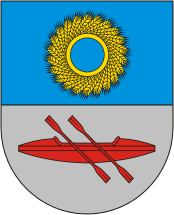 Alternate names: Čekiškė [Lith], Chekishki [Rus], Czekiszki [Pol], Tzeikishok [Yid], Chekishke, Čekiškés, Russian: Чекишки. צײַקישאָק-Yiddish. 55°10' N, 23°31' E, 24 miles NW of Kaunas (Kovno) in Kaunas district. Čekiškė is a small town in Kaunas County in central Lithuania with 2001 population of 734. 1900 Jewish population: 432. Yizkor: Lite (vol. 1) (New York, 1951). On the banks of the Dubysa River, the town of Čekiške was on the Kaunas-Raseiniai road. About 200 Jewish families lived in Čekiške before WWI. During the inter-war period, the number of Jews decreased significantly. About 60 Jewish families (45% of the total population) lived in Čekiške before WWII, the majority of whom were engaged in crafts and vegetable cultivation. The local Jewish community had its own bank during Lithuanian Independence (with 60 people as its members), a synagogue, a Hebrew school and a library. [March 2009]
Alternate names: Čekiškė [Lith], Chekishki [Rus], Czekiszki [Pol], Tzeikishok [Yid], Chekishke, Čekiškés, Russian: Чекишки. צײַקישאָק-Yiddish. 55°10' N, 23°31' E, 24 miles NW of Kaunas (Kovno) in Kaunas district. Čekiškė is a small town in Kaunas County in central Lithuania with 2001 population of 734. 1900 Jewish population: 432. Yizkor: Lite (vol. 1) (New York, 1951). On the banks of the Dubysa River, the town of Čekiške was on the Kaunas-Raseiniai road. About 200 Jewish families lived in Čekiške before WWI. During the inter-war period, the number of Jews decreased significantly. About 60 Jewish families (45% of the total population) lived in Čekiške before WWII, the majority of whom were engaged in crafts and vegetable cultivation. The local Jewish community had its own bank during Lithuanian Independence (with 60 people as its members), a synagogue, a Hebrew school and a library. [March 2009]
CEMETERY: "I visited Cekiske Jewish cemetery on August 3, 1997 with guide Regina Kopilevich. Cekiske is in the Kaunas district of Lithuania on the Dubysa River. The cemetery is south of the town, on the left side of the main road heading south towards Seredzius (Srednik). No road or path exists to the cemetery, so one must walk through a cow pasture to reach the cemetery, which is enclosed with a chain link fence that one may easily step over. The grass seemed to have been cut recently. A stone marker reads: "Old Jewish Cemetery" in Lithuanian and Yiddish. There are 63 tombstones, a few of which are toppled or illegible, but many are in good condition. Of these, 17 have last names. Kopilevich reported that the Cekiske cemetery is one of the oldest that she has seen in Lithuania, with some tombstones dated as early as the 1810's and 1820's. The latest burials are from the 1930's. I have transcribed the names and year of death for all the existing tombstones." To receive a copy of the list, contact: This email address is being protected from spambots. You need JavaScript enabled to view it., Brooklyn, NY.[date?]
Cemetery information. [September 2010]
MASS GRAVE: Forest at the river Gystus, 2 km from Veliuona in the direction Jurbarkas. The remains brought to Pakarke forest (see Vilkija) US Commission for the Preservation of America's Heritage Abroad
After Nazi occupation, an auxiliary police (white-bands) squad soon persecuted of communists and Jews with four communists shot during the first days of the Nazi occupation. In July 1941, a list of communists to be arrested was made and carried out from July to November. Quite a few volunteered for the armed squad. Individual Jews were shot until mass persecution started in mid-August when ghettos were set up and arrests of the Jews started in Kaunas guberniya. No ghetto was established in Čekiške, but local policemen and whitebands gathered Jews in the town synagogue and a few days later took them to Vilkija synagogue, a gathering point of 144 Cekiske Jews (70 women and 42 children) and other Kaunas Rural District from Seredžius, Veliuona, Lekečiai and Čekiške Rural Districts. The Jews were gathered during the weeks that followed, allowed to take clothes, footwear and valuables, Jewish immovable property was under the supervision of the Rural District authorities. In mid-August, a bigger part of the Jews from ilkija were taken to Kaunaswith a group of the Jews from Čekiške likely among them. The rest of Vilkija Jews were shot in Pakarkle forest (2 km from Vilkija) near Jaučake village on August 28--402 Jews (76 men, 192 women and 134 children). The Jews from Čekiške were shot with Vilkija Jews. Another execution of Čekiške Jews was on September 4, shooting not only 146 Čekiške Jews (22 men, 64 women and 60 children). but also Veliuona, Seredžius and Zapyškis Jews. Like other rural districts, Jews from Čekiške Rural District had to pay 15,000 roubles before the shooting. On September 5, the Kaunas District Commander specified that household items could be sold in an auction except for metal items, art, and carpets of good quality that had to be registered by a special commission of evaluation. Almost 50,000 roubles were received from the auction with which B. Semaška bought a wardrobe, a table, two beds, and four chairs. [March 2009]
